TUNE IN! An experiment to create a digital tool to turn an old shortwave radio station into a driver of city development during the pandemic
Edited on
13 November 2020Niilo Rinne & Ville Kirjanen June 2020
The URBACT project Come In! Talking Houses, Shared Stories faced existential challenges when the COVID-19 pandemic hit in spring 2020. ULGs are not able to meet face-to-face, events can not be organized, everything is uncertain. During the time span of the project, it will be hard to plan anything that would include social interaction with physical proximity.
As the original project plan is based on a community festival celebrating built heritage and bringing people together inside houses, we have asked ourselves: how to keep on working according to the principles of Come In! but without the certainty that the main event will ever be realized?
The City of Pori on the west coast of Finland offers an interesting digital solution that might well resonate within the Urbact network and drive change for better cities.
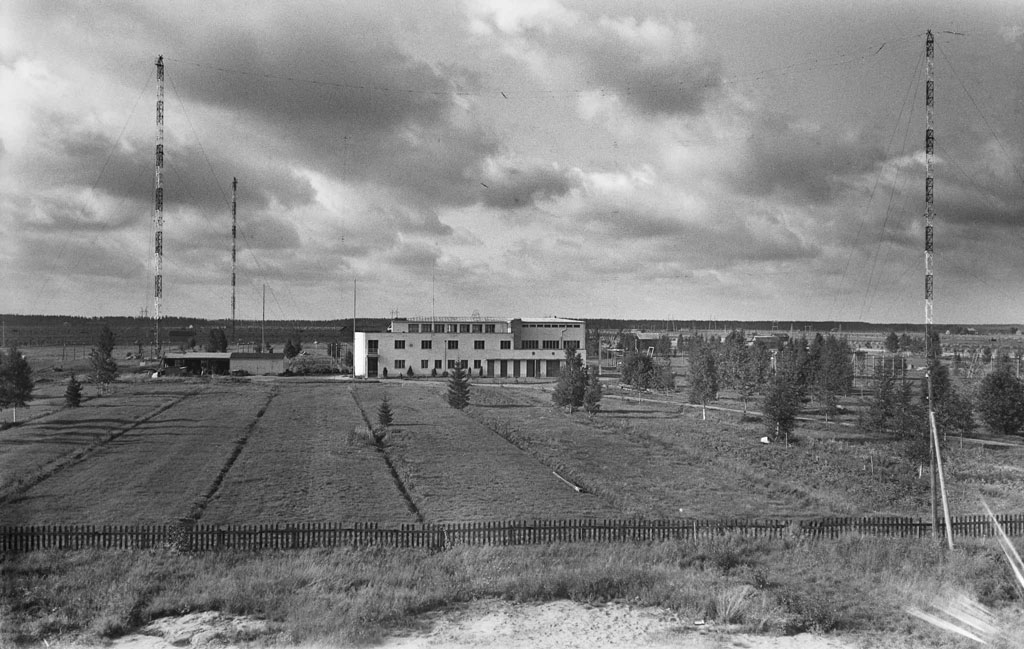
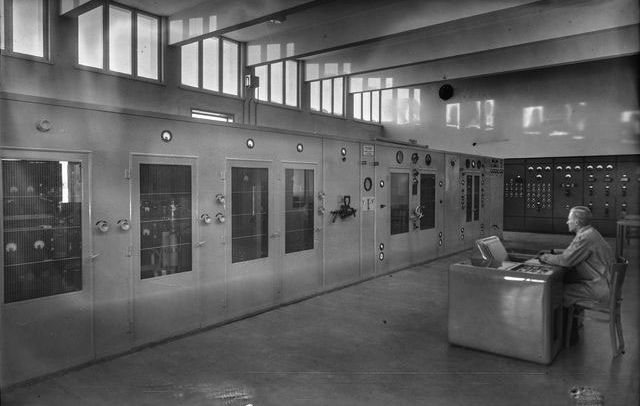
The station in the 50s. Photo: YLE archice | Indoor shot from the 50s Photo: Satakunta Museum |
FOLLOWING THE FUNCTION AND THE NARRATIVE OF A BUILDING CREATED FOR COMMUNICATION OVER DISTANCES
The wheel has to be re-invented. This thought has occurred to us several times when participating in projects dealing with urban and cultural (re-)vitalization. Being immersed in the built heritage allows you to tune in on the building’s history, it’s original function, its previous inhabitants and their perceptions and perspectives.
Reading cultural history and media archaeology makes you realize how inspired the ideas and enthusiasm were behind construction projects of the past, and how readily cutting-edge futuristic designs and technologies have always been developed and adopted.
Take for example the Bauhaus school in the 20s, where arts, architecture and technology came together. Let's then take the classic principle of modern architecture (“form follows function”) as the starting point, and let the form and the function of Come In! follow the form and the function (and in this case also the narrative) of a building, a radio station hidden in the midst of suburbia in the periphery of Europe.
Drawing upon the past and understanding history we can begin to take our own place in the narrative. Finding the tools and the medium from the very technology at the center of the building and its history. Creating connections with people and building bridges together to our shared heritage by means of current technology.
THE STATION
Built at the end of the 1930s and designed by architect Hugo Harmia, the shortwave radio station in eastern Pori is a beautiful example of functionalist thinking.
You couldn’t make a clearer argument on how a building is also a technology. In this particular case the building is a media technology, a transmitter built to transform electric signals into electromagnetic energy, energy that carries messages around the world with the aid of ionospheric propagation, an effect that allows shortwaves to bounce off the atmosphere back to earth connecting people.
For over 60 years, the strongest radio signal coming from Finland was broadcasted from Pori. The signal and its messages powered by the water flow of the Kokemäki River were captured by thousands of receivers around the world. Earlier in human history this would have been magic, or a 19th-century science fiction based on the theories of James C. Maxwell.
Investigating the idea and the function, it is easy to understand that we are not talking only of a building located in Pori, but of a construction that is international at its core, much like the global reach of its shortwave broadcasts. Even the inception of the station has its roots in the international community as it was built for the Helsinki olympics and to broadcast Radio Finland around the world.
Also its material connectedness to the industrial ecosystem and energy supply gives an interesting starting point for studying the history of built environments and genealogies of locality that are grounded in the geography of the region. In the periphery of Europe, Finland and Pori, and with the help of imagination, you can find a gateway to the universe of radiowaves and the marvel of action at a distance.
Radio activities ended in East-Pori in 1986 but shortwave broadcasts continued at a new site on the other side of Pori. Eventually the Finnish broadcasting company YLE shut down its shortwave signal on December 31st 2006. This day is a landmark in the history of digitalization in Finland.
THE CHALLENGE
Originally, the radio station had a central role in Come In!, although the event for sharing stories and highlighting the value of built heritage was also planned to take place in the neighbouring suburbs of Väinölä and Sampola, including also the copper industry that has a founding role in the formation and identity of the area.
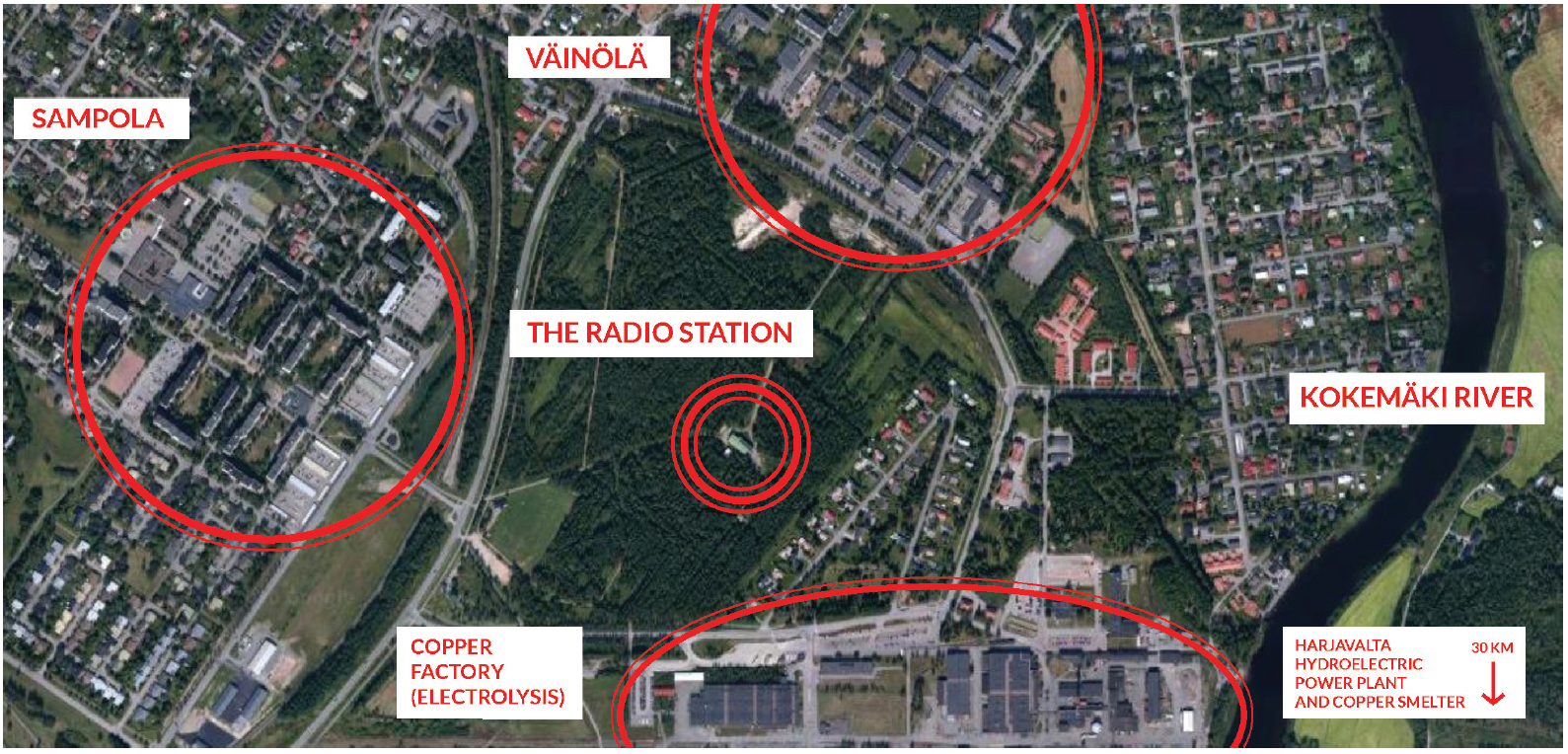
The new situation forced us to reprogram the activities in Pori and we decided to focus solely on the station. Its very interesting history offers an inspiring starting point to explore methods for tackling the challenge posed by social distancing and to build the grounds for a post-corona community action. It also has a great potential for bringing people together from all the neighbouring suburbs, but also further away.
A SOURCE OF STORIES
In its way the station used to be a talking house that shared stories around the world. It is also a source of several urban legends that especially the elderly locals are very familiar with.
The most well-known accounts tell us that, during the 70s and 80s, before the station was closed, the transmission power had been increased so much that over 13 000 people in east-Pori were familiar with the effect that you could hear the programmes from refrigerators, radiators and even pots, pans and sauna stoves in the nearby buildings.
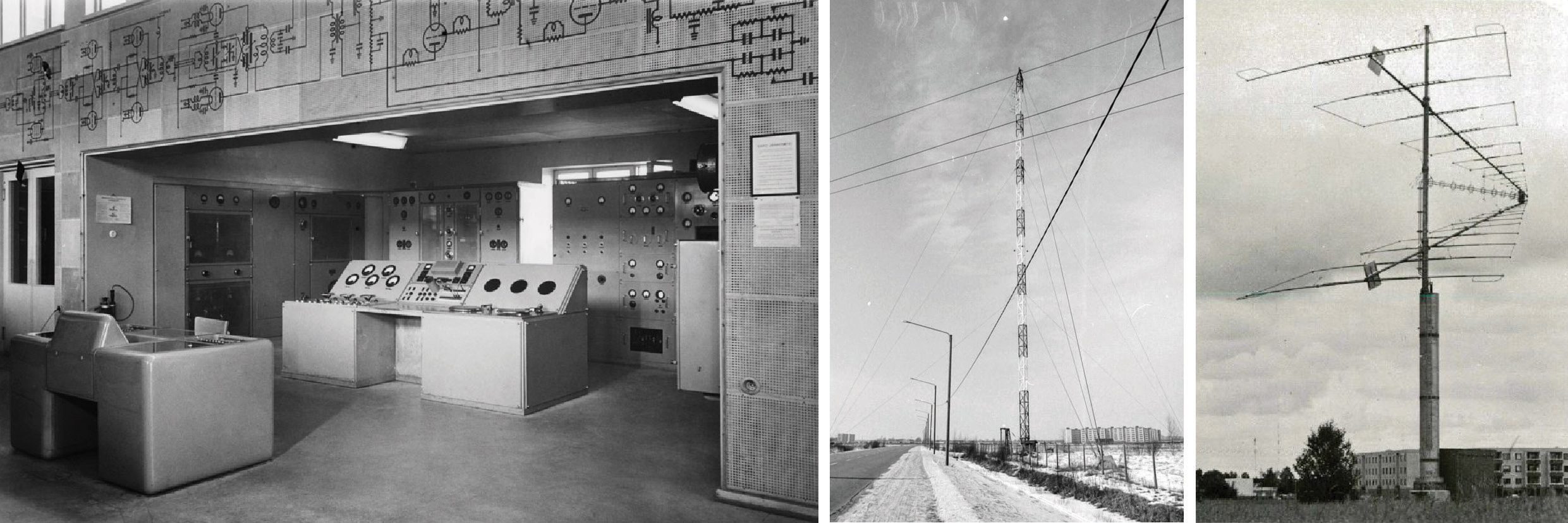
Indoor shot from in the 50s. Photo: Satakunta Museum Antennas right next to the suburbs of Sampola and Väinölä in the 70s. Photos: Ilpo J. Leppänen and YLE Archiv
Another story tells us how technicians used to amuse young visitors at the station. They would take a fluorescent tube out of the box and wield the wirelessly glowing tube, like a Star Wars lightsaber powered by the high energy field inside the building.
A fictional account published in the national tabloid magazine Hymy, tells us that the one of the antennas was so strong that it had set fire to an old barn nearby. Although a more credible narrative proposes that kids playing with matches might have been the true culprits.
A GROUND FOR ARTS AND CULTURE
Since its closure, the building has been used as a garage for a local automobile club and as a rehearsal space for local bands. Most visibly, since 2011 it has been used by the artist association T.E.H.D.A.S. as a free project space for exhibitions, concerts, clubs and many kinds of events, such as artistic workshops for kids and refugees as well as a 42 hour LIVE ambient festival in 2016.
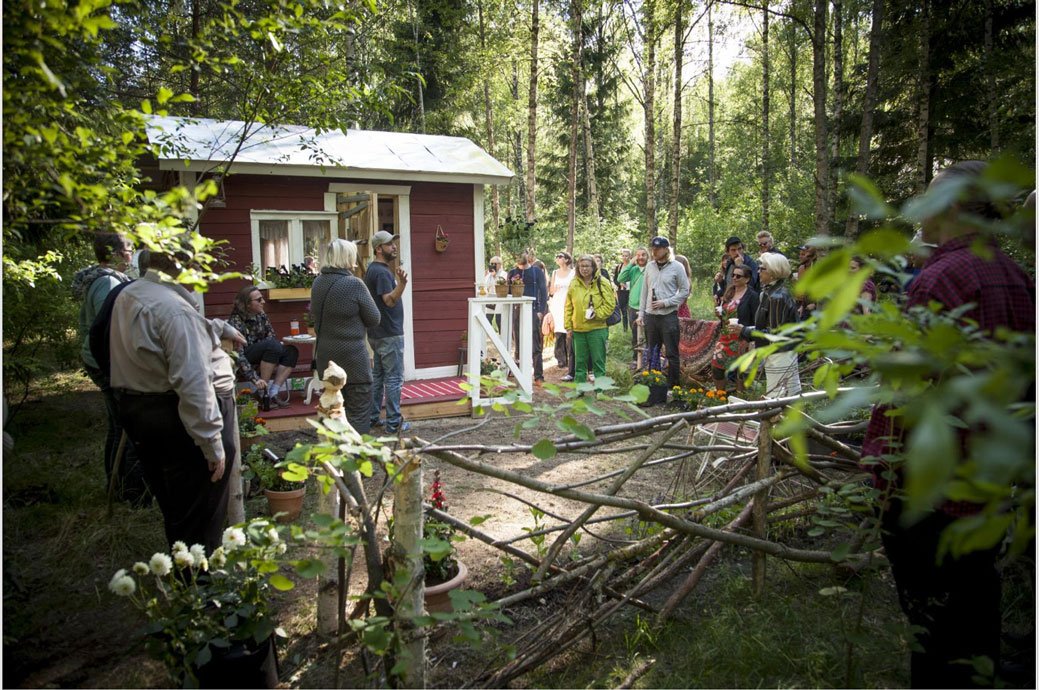
T.E.H.D.A.S. has also built a sculpture park right next to the station in collaboration with the City of Pori. T.E.H.D.A.S. uses both the building (owned by the city) and the park as a space for annual summer exhibitions. The near mythical stories of the building and its surroundings has provided inspiration for numerous artworks.
ANIMATING BUILT HERITAGE WITH DIGITAL TOOLS
Since society and people are operating at a distance, we thought that this might be an opportunity to create a new digital approach which deals with the community and the building created for long-distance human interaction. We then decided to build a website for the history of the building and the local stories relating to it. Stories, photos and different kinds of historical material is crowdsourced with the help of social media, and collaboration with local radios and other media.
Instead of just an ordinary website, we decide to create something experimental with an interactive and experiential twist. The idea is still under development, but what we are looking for is to bridge old and new, history and present, and to build something for the future. By creating an extension of the station into the digital realm and by visualizing the invisible world of radio waves, we aim at reanimating the station and bringing it to life.
We try to accomplish this by designing a function inside this digital extension, a function that would record experiences related to the building and its surroundings. The website would work as a sort of an answering machine that people could call using an ordinary phone and recount their memories. The stories can also be left as an audio file or in written form on the website – or by sending a card or a letter to the station (an old custom still used by radio amateurs to map out the reach of radio signals).
These stories would then be published online and paired with visualizations reflecting the idea and esthetics of radio waves and radio technology.

Two attempts to visualize the invisible universe of radiowaves and communication (Images: Creative Agency Ensemble)
POST COVID-19
If the event can not be organized, the online work and research done during the pandemic would still exist and be readily available for the public. The effort invested in the project wouldn't be lost. At the same time the material collected on the website can easily be turned into an exhibition at the station using prints, sound and video, with the vernissage working as the community event in case the restrictions allow it.
At the moment of the publication of this text, our plan is to organize two smaller scale events instead of one big event: an exhibition with crowdsourced material about the history of the station in the end of September 2020 and another event designed by the ULG in April 2021.
But leaving aside the possibility of organising the events, the ambitious web design will still transmit the beauty, history and the curious nature of the building not only to the locals, but to a national and international audience. This will support the local valorisation of the built environment and promote civic engagement and proudness as well as the sense of belonging and a sense of ownership.
The City of Pori will continue developing cultural use of the building and will renovate its facade in near future. The automobile club, whose depot still occupies over half of the space, will be moving out, leaving a space for local residents and associations to organize community action.
Paired with the digital update of the building this process will highlight and broadcast the potential of built heritage as a tool for sustainable city planning and community building. The new space will be a place for the future, for meeting new people and sharing new ideas, a platform for inspiration and creativity, for culture and active citizenship.
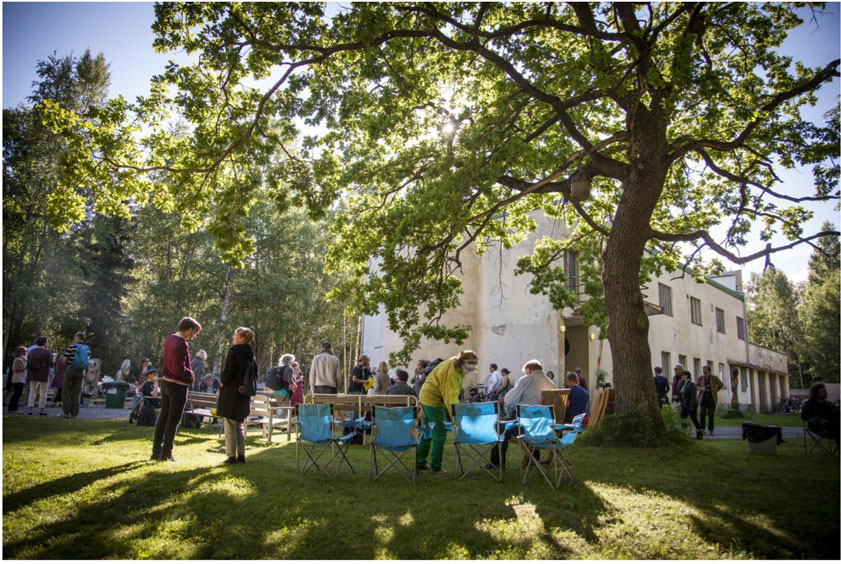
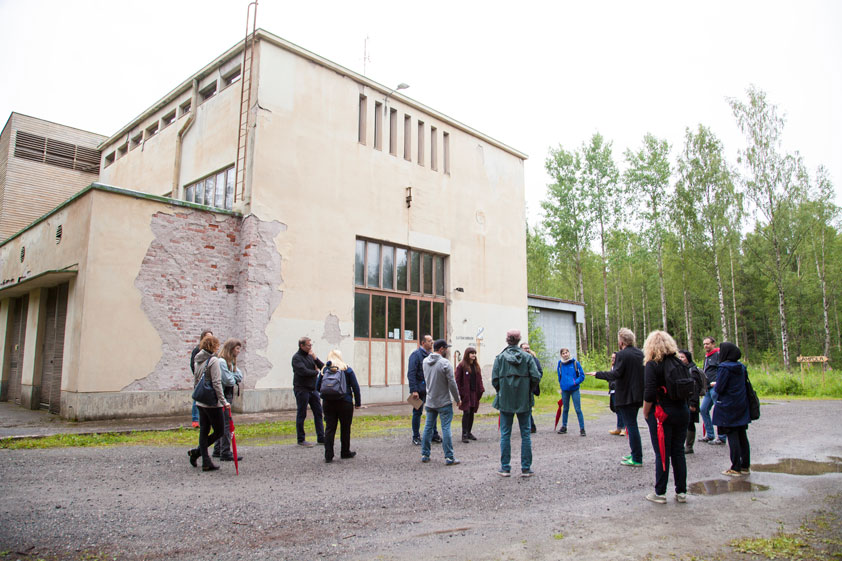
Summer exhibition of T.E.H.D.A.S. (2018) Photo: Niilo Rinne Treasure Hunting Workshop of Come In! (July 2019) in front of the door of the new space to be opened for community action. Photo: Niilo Rinne
Submitted by Artur Katai on
